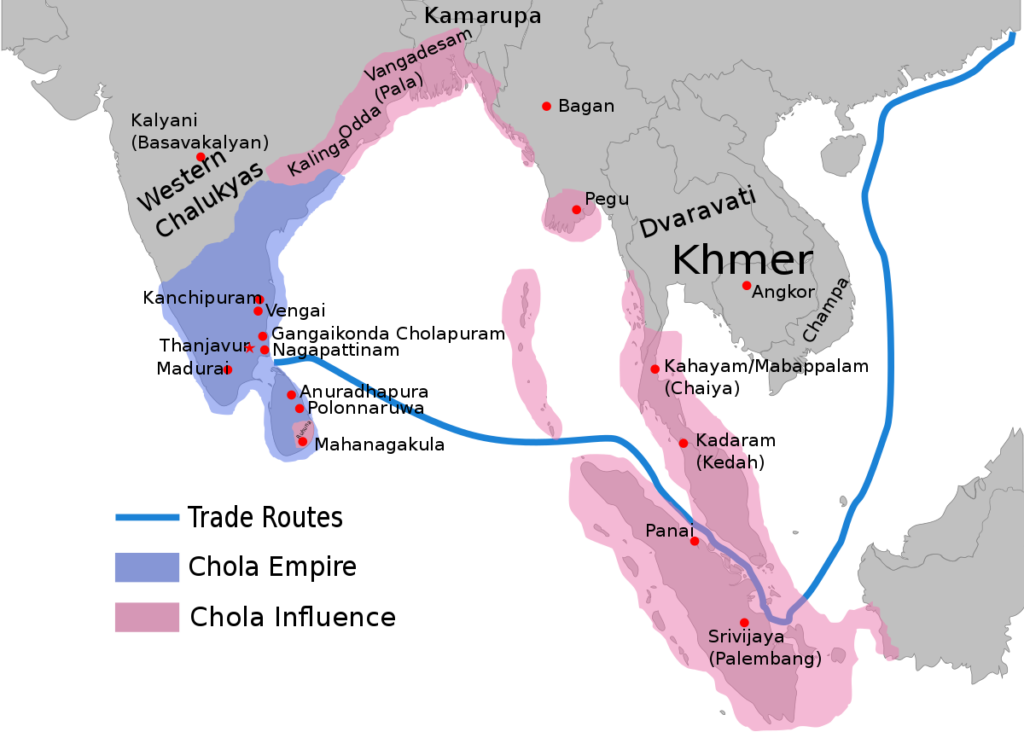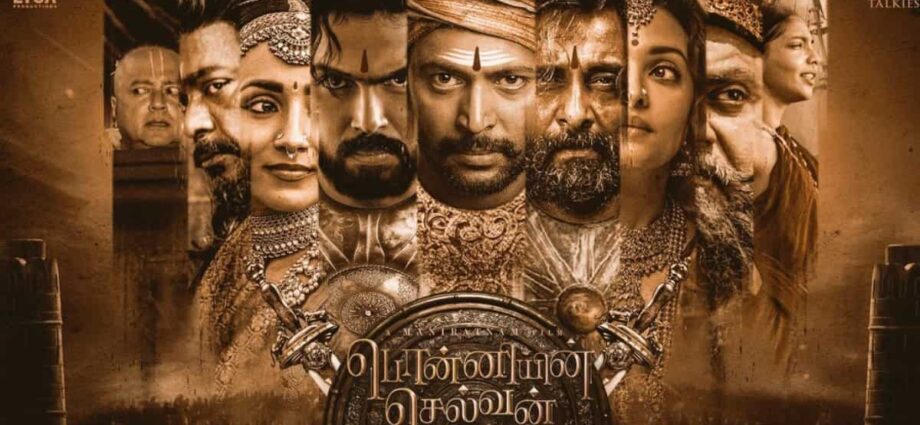Many of us are not aware that in the list of the longest reigning empires in the world, there were three Tamil empires. The British Empire is ranked only as forty-eighth.
Chera Reign – 430 BCE – 1102CE = 1532 years
Chola Period – 301 BCE – 1279CE = 1580 years
Pandya reign – 580 BCE -1345CE = 1925 years
When we are asked to name the empires we know, we usually list the British Empire, French Empire, Roman Empire, but we do not know the names of the Tamil Empire because our Tamil history has been long suppressed and taught only as footnotes in school textbooks. Our education system failed to highlight the glorious past of our Tamils Kings while it eulogises barbaric Islamic invaders.
The terms Chera Chola Pandya have narrowed the understanding of the three dynasties to a few Kings. When the names of the illustrious Kings appear in literature, we never see it as part of an empire. To understand these dynasties and their achievements, we first need to know the names of the kings of the empires we had.
Even people with some knowledge of Tamil history, speak mainly about the five Chola names mentioned in Ponniyin Selvan story but are seldom aware of the great history of all the three Tamil dynasties and the Pallava dynasty.
All the Tamil Kings were deeply religious, devout Hindus; they built many temples and revered the saints and sadhus. They facilitated an environment which was conducive for growth of Vedic civilization. The Sangam literature grew under their patronage. The bhakti movement started and was at its peak during their times. The holy Alwars and Nayanmars composed and sang hymns on Hindu Gods and did yeoman service for the growth of Bhakti literature. The Nayanars and Alawrs were Hindu saints dedicated to Lord Shiva and Vishnu respectively. They led religious movements in south India from 7th to 9th century. The Nayanars were committed devotees of Bhagwan Shiva while the Alvars were staunch devotees of Bhagwan Vishnu. The holy Alwar and Nayanar saints hailed from across all Varnas and Jatis including the castes classified today as ‘Dalits’ like the Pulaiyar and the Panars.
Along with Shaivites and Vaishnavites, Buddhism and Jainism also found their place in the great Tamil kingdoms.
The story of Ponniyin Selvan is of the rivalry between Cholas and Pandyas. In fact all the great kingdoms can be divided into the first, last and middle periods ruled by illustrious Kings. The story of this movie is of the kingdoms in the middle period of the Tamil Empires.
The rivalry between Cholas and Pandyas and the internal strife for the throne among the Chola heirs is the story line. It is history blended with fiction. The real story is about Rajaraja Cholan and how he put down all his enemies and became king of Cholanadu . In fact, he is a great Saivite who built the famous Brihadeeswara temple in Thanjavur. The Chola kingdom was at its peak of glory during the reign of Rajaraja Chola and his son Rajendra Cholan.
The Chola kingdom excelled in many areas of knowledge and their popularity spread far and wide. They had the best naval fleet and conquered many kingdoms far away from India which includes Sri Lanka, China, Thailand, Indonesia, Malaysia etc.

Ponniyin Selvam refers to Rajaraja Cholan who is called as Arulmoli Thevan and he is the youngest son of the Chola king Sundharaja Cholan. The eldest is Adhithya Cholan and next to him the daughter, Kundavai. Adhitya Cholan kills the wounded Pandya king in front of his wife Nandihini who is a childhood sweetheart of Adithya Karikalan. Nadhini now in revenge marries the minister for treasure Paluvettaraiyar and tries to avenge her husband’s death. The internal strife between Palavettariayar and Adithya Karikalan shows the minister trying to replace the rightful heir Adhithya Cholan with Paranthaka Cholan who is his cousin.
All this fight leads to the killing of Adhithya Karikalan and ends up with the younger son Arulmoli becoming the king with the help of Vandhiyathevan, his brother’s friend and the princess Kundavai.
It is very difficult to make a movie of Ponnyin Selvan as it is a five-volume classical novel which is a historical fiction and has been a very popular from the time of its publication in early 1950s. Mani Rathnam has done his best to bring out the soul of the novel but has not succeeded completely. Too many characters and incidents make the movie a fast moving one and so the audience might leave feeling dazed with too many stars in the movie. The music is a big flop as it requires someone of the stature of Illayaraja for this kind of period movies.
The communist within Manirathnam showed up in the movie where he slyly introduced his agenda by depicting an exaggerated fight between Vaishanvites and Saivaites. He also tries to mock the Vaishnavite Alwar, Kadiyan Nambi by portraying him as a comedian. The mischief is stark as the Vaishnavite Alwar is a Brahmin character who has been deliberately caricatured as a joker by Maniratnam, as opposed to the character’s portrayal in the original novel by Kalki Krishnamurthy. Thankfully, though Maniratnam has retained all the religious symbols of the Kings and kingdoms. Going by Maniratnam’s past record and his mischief with movies like Raavan, Hindu viewers had braced for a far worse depiction of the classic, Ponniyin Selvan.
Now many of the Dravidian stooges like director Vetrimaran have started crying that Rajaraja Cholan is shown as a Hindu king! While it is an undeniable historical fact that Rajaraja Cholan was an ardent Shiva bhakta and built many religious places of worship for Lord Shiva. Muslim groups have started fraudulently claiming that Princess Kundavai converted to Islam whereas there is ample evidence of her generous donations on several occasions huge amount of lands and jewels for Hindu Temples.
Pertinently, the period of this middle age Cholas was around 963 – 971 AD and the Muslim influence in South India began in 14th century. With Tamilians now starting to deeply research about their past history, the Dravidian parties, communists and ‘minorities’ are on an overdrive spreading all kinds of false claims to deny the glorious history of the Tamil Kings as a golden Hindu era.
Image sourced from internet.
![]()
- SEEMAN A TEAM-B OF DMK TO SPONGE ANTI-DMK VOTES? - February 9, 2023
- TAMIL EMPIRES AND PONNIYIN SELVAN - October 4, 2022
- Kidugu: Pathbreaking Tamil Movie Exposes Fake Dravidianism - September 24, 2022

